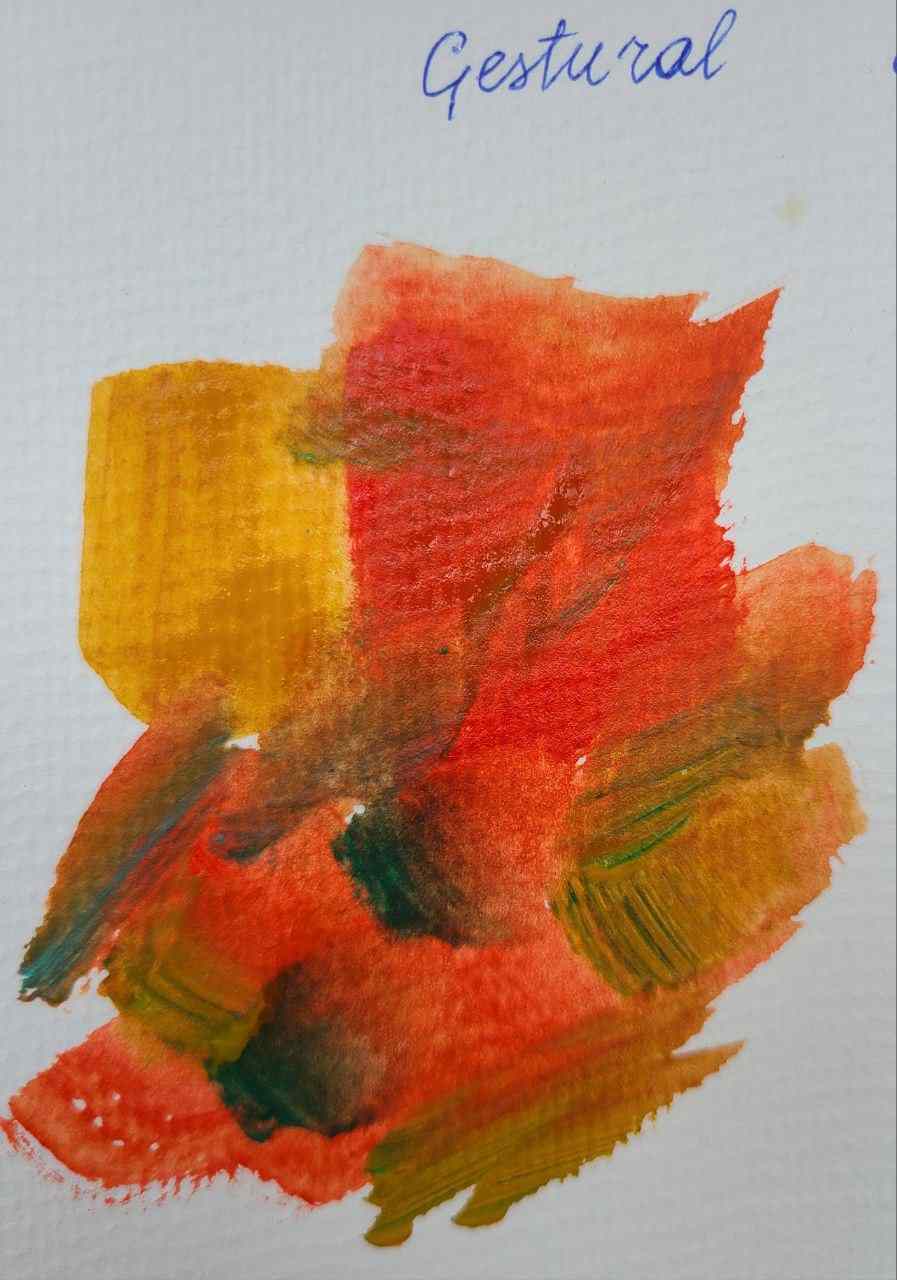Last Updated on March 13, 2024 by Masha Eretnova
When a brush leaves lines and marks no matter what you do, it is pretty annoying. You probably want a smooth, seamless finish for your acrylic painting.
I can show you how to avoid brush strokes in your acrylic painting with very simple tips, all beginner-friendly. 3 key elements to avoid brush strokes are technique, soft brush and good paint.
No matter what, remember: it is very easy to prevent brush marks and streaks, and it is absolutely possible to fix them.
This article contains affiliate links. It means no extra cost for you but a little commission (2-3%) for me to support my hobby and blog. Thank you!
#1 Use soft bristle brushes
Soft synthetic brushes have smoother lines in acrylic painting. Rigid brushes with stiff bristles will have visible marks.
Choose brushes with long bristles as short bristles are more likely to leave streaks and marks.
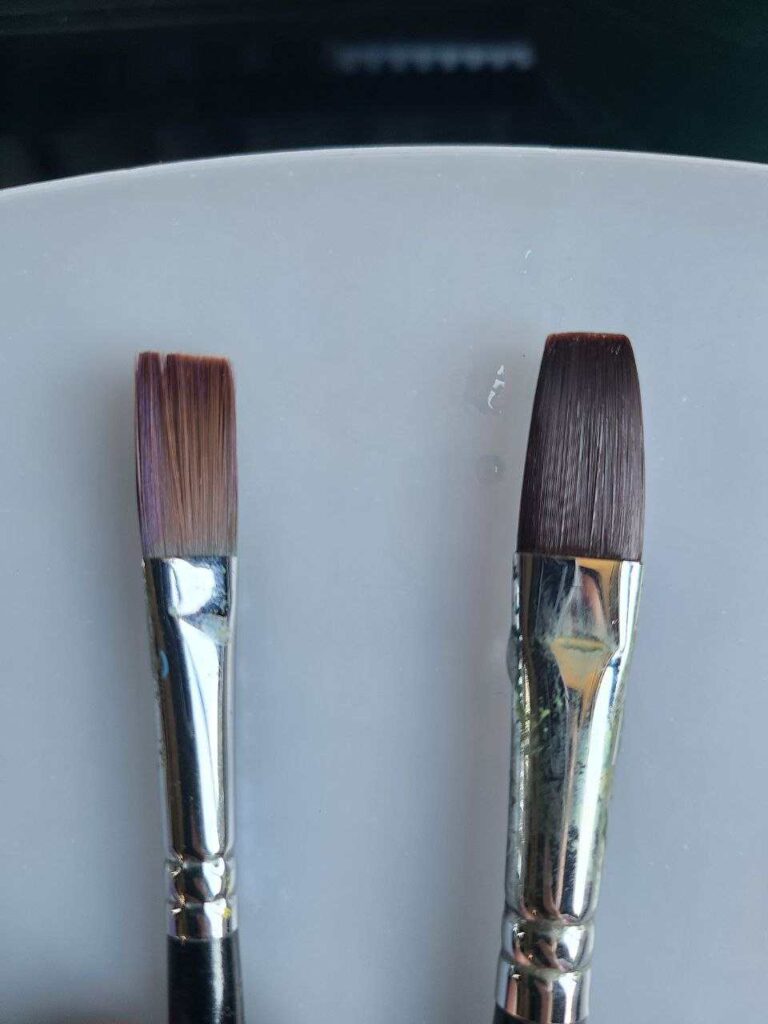
Cheap brushes are more likely to leave bristles on the surface, bend, and leave brush strokes. They are also more often stiff.
Brush age
Even if you are an experienced painter, you need to renew your brushes. The older a brush is, the more likely it will begin to lose bristles. Over time a brush becomes rougher, even if you clean it properly every time, it is still affected by all the times you used and cleaned it.
If you see that the brush can no longer hold the shape, it is time to buy a new one.
Related: The Best Brush for Acrylic Paint on Canvas
#2 Paint on smooth surfaces
Smooth canvas will help acrylic paint stick better and without marks or strokes.
You can always buy a ready-to-use canvas in any store – choose properly stretched, triple-primed with gesso, back stapled canvas. Cotton canvas will be cheaper than linen.
If you touche the canvas and it feels rough, you will have visible brush strokes. Sand it and apply 1-2 coats of gesso until it is completely smooth.
If you have an unprimed canvas:
- make sure it is clean and even.
- prime it with 3 coats of gesso. Let each coat dry!
- you can sand each coat to make the surface smoother.
- let it dry overnight and paint.
#3 Add Floetrol

Floetrol works like a flow improver and it makes any acrylic paint fluid and maintains perfect consistency. It will help the brush to glide nicely without streaks or marks.
- Add a little bit and the paint will become softer and easier to use with a brush – smoother strokes
- Add a lot to make acrylic completely fluid – for acrylic pouring.
#5 Thin your paint
Acrylics need to be thinned in order to perform better. Thick paint is drying slower, harder to control and it leaves visible texture and brush strokes.
- The easiest way to thin acrylic paint is to use tap or distilled water. But it makes the paint more transparent.
- The most effective ways are flow improvers and fluid mediums.
Thinned paint is easier to control, will dry faster, will create even layers and smooth surface.
A full guide on How to thin acrylic paint for beginners with all questions answered is here. If you use airbrush or a sprayer, you will still need to thin your paint.
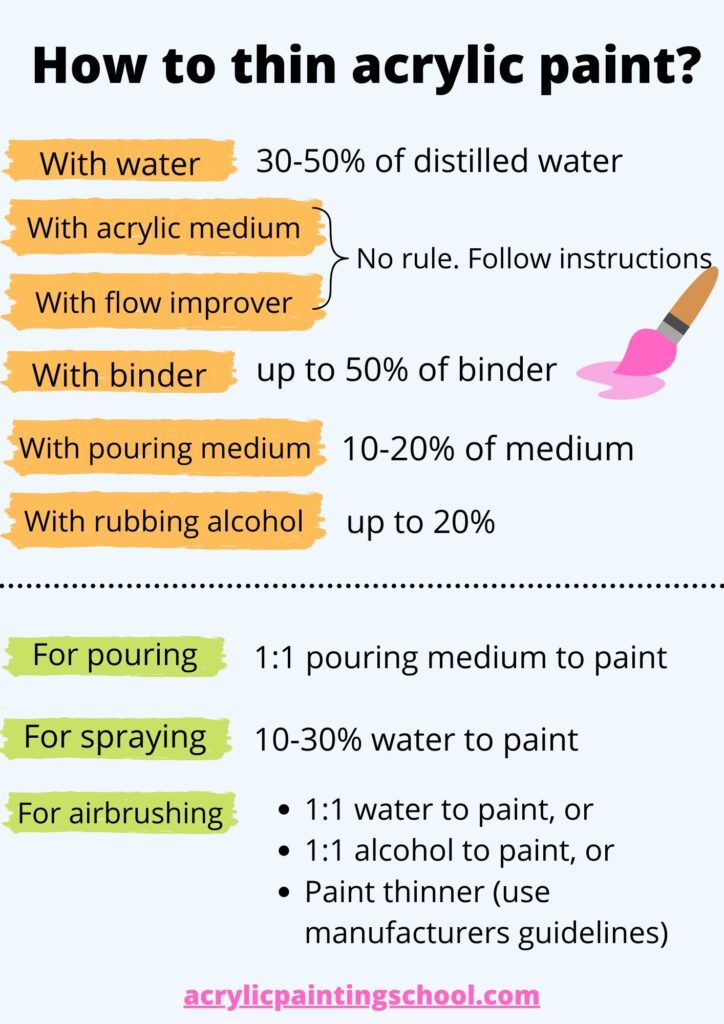
#6 Paint in thin layers
Thin layers are the best way to paint with acrylics and they have least chance to have any brush strokes or marks.
Thin layers dry faster than thick ones, and are easier to cover mistakes.
Sometimes, beginners believe that a thick layer means darker and brighter colors. It is not always the case. A thick layer can not only have brushstrokes but even crack.
#7 Try fluid acrylics
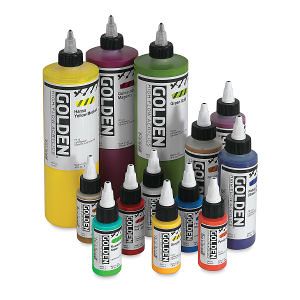
Fluid acrylics are acrylic paint with increased flow. They are thinner, like liquid honey, which means less likely to leave brush streaks.
The best fluid acrylics are Golden High Flow Acrylic Paint for painting, but they will also work for pouring, drawing, staining, glazing, inking, hand lettering, and spraying.
#8 Use the right amount of paint
It is important to load the brush with the right amount of acrylic paint to prevent brush strokes: don’t let the paint drip, but don’t let your brush bare too.
The right amount of paint = the brush is fully loaded, the paint stays on the tip of the brush without dripping.
- Paint dripping = > too much paint, the brushstrokes will be visible, expressive and take longer to dry
- Bare brush = > not enough paint, will expose bare canvas and have uneven coverage
#9 Don’t press too hard on the brush.
Do you press too hard on the brush? It is a common beginner’s mistake in painting. If you notice that the bristles start to fan out, it means you’re pressing too hard.
Be gentle, the pressure will not make the paint application smoother. To make an even, smooth, and nice surface, we need to let the paint flow. The pressure doesn’t let the paint flow and distributes evenly.
Sometimes we press hard because we think the paint will cover better, but if you struggle with coverage it is an issue with acrylic paint not being thinned (water down) enough and not the pressure.
#10 Don’t “stretch” the paint on the brush.
We need to use the right amount of paint, a brush should be fully loaded, but it should also be reloaded often.
A partly loaded brush, a bare brush, a brush with not enough paint left on it will create an uneven coat, that you will want to go over immediately, but you cannot do it!
Load a brush from both sides (if it is a flat brush) or by swirling if it is a round brush.
So better reload often and check the brush.
#11 Don’t overwork the same area
Common reason for brushstrokes is us overworking a semi-dry area. If you see that the paint started to dry, do not brush it again – you will create marks and they will dry.
Let the layer fully dry and then correct that area.
#12 Stabilize
No matter vertical or horizontal is your project or painting, you need to stabilize it, as any random movement can ruin the whole painting.
- While painting on canvas, paper, or boards, use an easel to fix your painting. Step back often to check the whole image.
- It will assure that all your hand movements are firm and gentle. So no brush strokes.
#13 Be patient with drying time
Most mistakes, imperfections, cracks, and even strokes happen when we do not let each layer dry properly.
Thin layer of acrylic paint will dry in 5 to 20 minutes and you can continue working.
If you are impatient better use a hair-dryer to speed the process up but do not start a new layer until the previous one is dry.
#14 Master proper technique
A good technique of using a brush plays the biggest role in avoiding marks and streaks.

Some brush technique tips for artists:
- Hold a brush like you hold a pencil
- While painting do not press on the brush too hard, let it flow gently with the paint
- While painting, hold your brush at an angle to the painted surface.
- Dip the tip of the brush in a jar with clean water before you dip it into the paint.
- Keep 2 jars with water while painting, keep brushes wet and clean.
- Move from dark to light with oil and acrylics, and from light to dark with watercolor.
- Large areas first, details – the last
- Only use clean brushes – brushes with paint dried on them will be stiff and will certainly leave marks.
- Use appropriate brush shape to achieve needed effects:
- if you need to cover large areas use flat brushes
- to paint details use liners, pointed round brushes
- angular brush to paint edges, fill corners, etc.
Read also: 73 Acrylic Painting Techniques For Beginners to Paint like a Pro
#15 Use a mop brush for blending
If you struggle with brush strokes in the background when you blend the colors, try using a mop brush for smoother blending.
It will create a smooth surface, the colors will create a sort of gradient.
Use a mop brush for blending. A cheap makeup brush can work too if it holds the shape and does not lose bristles.
Apply colors on the canvas. then dip the mop brush in water, squeeze out all excess water and with light circular movement start blending the colors on canvas.
#16 Mist the paint with water
The brush strokes may appear in acrylic paint when the paint you’re using is starting to dry out and harden.
To prevent this, keep a misting or a spray bottle next to you and just give your palette a spray every 10 minutes.

#17 Always mix properly
If you are mixing colors yourself, adding a medium to your acrylic paint – please mix really well as poorly mixed acrylics can be streaky.
#18 Use opaque paint
Opaque acrylic paint masks and hides brush strokes much better, while with a transparent color every mark is visible!
Check the label – it will say if the color is opaque or not and if it is not you can try and make it look more opaque to get rid of brush strokes.
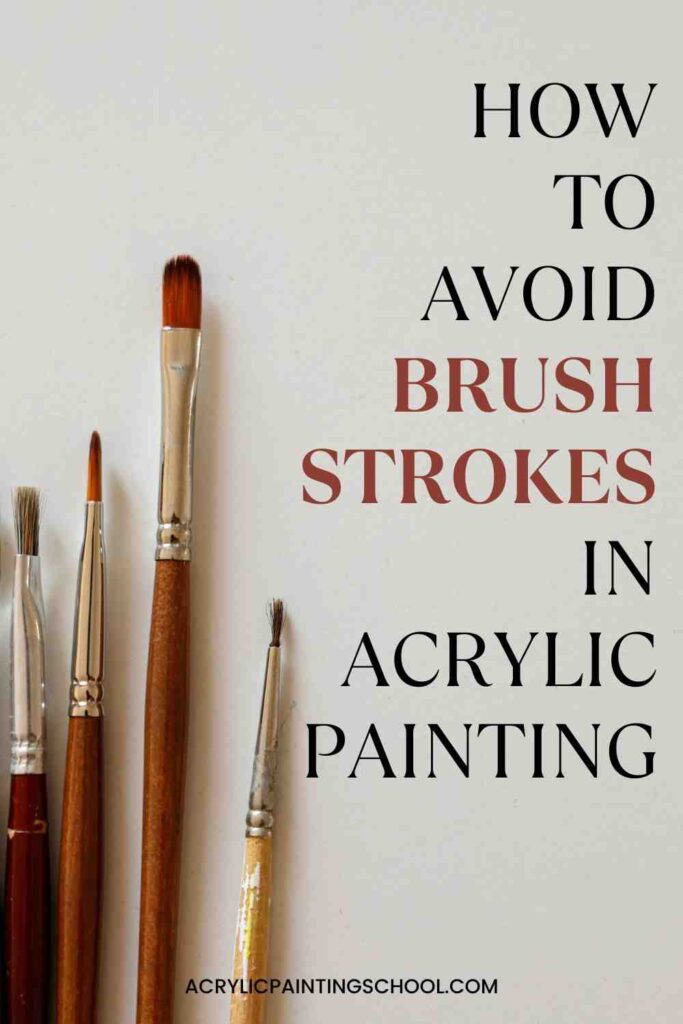
How did Da Vinci paint without brush strokes?
Da Vinci’s masterpieces have no visible brush strokes because he used very detailed brush and magnifying glass and blended each area thoroughly.
He used a technique called sfumato to make invisible transitions between colors which means to soften all strokes and edges.
We are maybe not yet Da Vinci but we got some tricks too so do not worry about occasional brush marks in your acrylic painting. Practice and your technique will be better, and the supplies you are using will be upgraded too over time.
Let me know if you are doing better know? If you have any questions, ask in comments!

Masha Eretnova, born in 1991, is a Buenos Aires-based certified teacher, artist, and member of the Professional Artist Association with 20+ years of personal painting journey.
She started painting and drawing very early and is now an international abstract artist and educator passionate about acrylic painting, gouache, and crafts.
Her works are part of international exhibitions and contests, including ArtlyMix (Brazil), Al-Tiba 9 (Spain), Exhibizone (Canada), Italy, and many more.
Besides her artistic pursuits, Masha holds a post-grad diploma in Teaching Film Photography and 2 music school diplomas: piano and opera singing.
